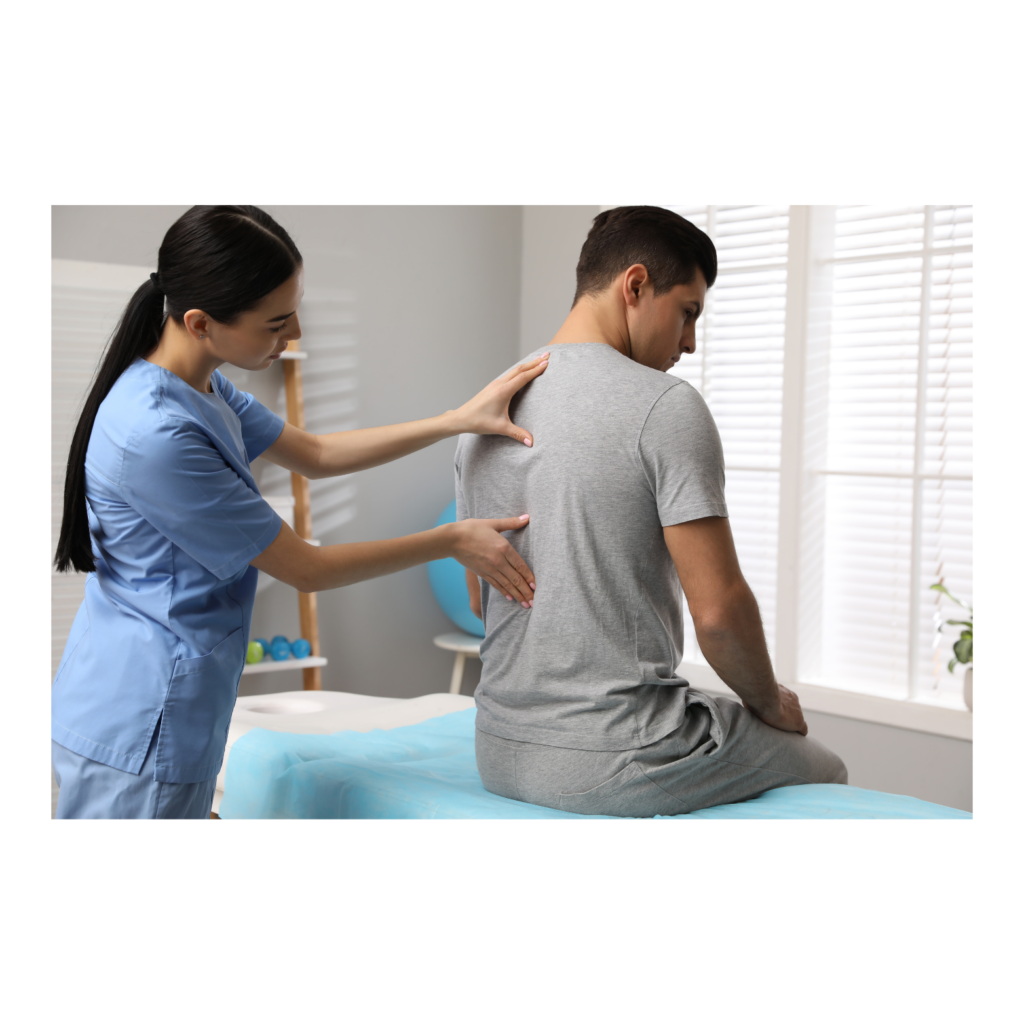Upper cross syndrome
Understanding Upper Cross Syndrome: Causes, Symptoms, Diagnosis, and Management
Upper Cross Syndrome (UCS) is a musculoskeletal condition characterized by specific muscle imbalances and postural changes in the upper body. This article provides a comprehensive overview of Upper Cross Syndrome, including its causes, symptoms, diagnosis, and management options, aiming to enhance understanding and awareness of this condition.

What is Upper Cross Syndrome?
Upper Cross Syndrome is a postural distortion pattern that involves muscle imbalances in the neck, shoulders, chest, and upper back. It typically results from prolonged poor posture, such as sitting at a desk for extended periods with rounded shoulders and forward head position. UCS is characterized by tightness and overactivity of certain muscles (upper trapezius, levator scapulae, pectoralis major/minor) and weakness or underactivity of others (deep neck flexors, lower trapezius, serratus anterior).
Causes of Upper Cross Syndrome:
Several factors contribute to the development of Upper Cross Syndrome:
Poor Posture: Prolonged sitting with slouched posture, forward head position, and rounded shoulders can lead to muscle imbalances and structural changes in the upper body.
Muscle Imbalances: Weakness or underactivity of deep neck flexors, lower trapezius, and serratus anterior muscles, combined with tightness or overactivity of upper trapezius, levator scapulae, and pectoralis muscles, contribute to UCS.
Repetitive Movements: Occupational or recreational activities that involve repetitive movements or sustained positions, such as typing, carrying heavy loads, or playing musical instruments, can exacerbate muscle imbalances and postural changes.
Biomechanical Factors: Structural variations, joint stiffness, or anatomical abnormalities in the spine, shoulders, or neck may predispose individuals to Upper Cross Syndrome.
Lifestyle Factors: Sedentary lifestyle habits, lack of regular exercise, and improper ergonomics in work or home environments can contribute to the development of UCS.
Symptoms of Upper Cross Syndrome:
Signs and symptoms associated with Upper Cross Syndrome may include:
Forward Head Posture: Protrusion of the head forward relative to the shoulders, leading to strain on the cervical spine and neck muscles.
Rounded Shoulders: Shoulder blades that appear hunched forward or elevated due to tightness in the chest muscles and weakness in the middle and lower trapezius muscles.
Neck and Shoulder Pain: Discomfort or tension in the neck, upper back, or shoulders, often exacerbated by prolonged sitting or activities that strain the upper body.
Limited Range of Motion: Restricted movement of the shoulders or neck, affecting activities such as reaching overhead or rotating the head.
Headaches: Tension headaches or cervicogenic headaches, stemming from muscle tension and altered biomechanics in the neck and upper back.
Diagnosis of Upper Cross Syndrome:
Diagnosing Upper Cross Syndrome typically involves a comprehensive evaluation by a healthcare provider, including:
Medical History: Gathering information about the onset of symptoms, previous injuries, occupational factors, and lifestyle habits that may contribute to muscle imbalances and postural changes.
Physical Examination: The healthcare provider assesses posture, muscle strength, range of motion, and signs of muscle tightness or weakness in the neck, shoulders, and upper back.
Functional Movement Assessment: Evaluating functional movements such as shoulder rotation, neck flexion/extension, and postural alignment during dynamic activities to assess muscle activation patterns and compensatory movements.
Management and Treatment Options for Upper Cross Syndrome:
Treatment for Upper Cross Syndrome aims to correct muscle imbalances, improve posture, and alleviate symptoms associated with postural distortion. Management options depend on the severity of symptoms and underlying factors:
Postural Correction: Educating the patient on proper posture principles, ergonomic adjustments, and strategies to maintain neutral spinal alignment and shoulder position during daily activities.
Stretching Exercises: Implementing targeted stretches for tight muscles, such as pectoralis major/minor and upper trapezius, to improve flexibility and reduce muscle tightness.
Strength Training: Prescribing exercises to strengthen weak muscles, particularly the deep neck flexors, lower trapezius, and serratus anterior, to stabilize the shoulders and support proper postural alignment.
Core Stability Exercises: Incorporating exercises to enhance core strength and stability, such as planks, bridges, and pelvic tilts, to improve overall body alignment and reduce strain on the upper body.
Manual Therapy: Techniques such as soft tissue massage, myofascial release, or chiropractic adjustments to mobilize stiff joints, improve spinal alignment, and reduce muscle tightness associated with Upper Cross Syndrome.
Ergonomic Modifications: Advising on ergonomic principles for workstations, seating arrangements, and daily activities to minimize strain on the neck, shoulders, and upper back.
Physiotherapy for Upper Cross Syndrome:
Physiotherapy plays a crucial role in managing Upper Cross Syndrome by:
Education: Providing education on the causes and consequences of Upper Cross Syndrome, emphasizing the importance of posture awareness, ergonomic principles, and adherence to prescribed treatments.
Exercise Prescription: Designing individualized exercise programs tailored to the patient’s specific muscle imbalances and functional limitations. Exercises focus on stretching tight muscles, strengthening weak muscles, and promoting optimal posture and shoulder mechanics.
Postural Training: Implementing techniques to help maintain neutral spinal alignment and shoulder position during static and dynamic activities, reducing strain on the neck and upper back muscles.
Functional Rehabilitation: Incorporating functional activities and movement patterns that simulate daily tasks to improve overall shoulder mobility, stability, and quality of life.
Progressive Rehabilitation: Gradually progressing exercises and activities based on individual response and functional improvement, ensuring safe and effective rehabilitation and long-term management of Upper Cross Syndrome.
Conclusion:
Upper Cross Syndrome is characterized by specific muscle imbalances and postural changes in the upper body, leading to symptoms such as forward head posture, rounded shoulders, and neck/shoulder pain. Early diagnosis and intervention, including physiotherapy, are essential for managing symptoms, correcting muscle imbalances, and improving overall posture and quality of life for individuals affected by this condition. By implementing a comprehensive treatment plan tailored to individual needs, healthcare professionals can optimize outcomes and provide personalized care throughout the rehabilitation process. Collaborative care between patients, physiotherapists, and other healthcare providers ensures effective management and support for Upper Cross Syndrome.
Ready to start your journey to recovery? Contact us
Appointment
Have a question?
Call us on +91 8448945434 or simply book an appointment with us